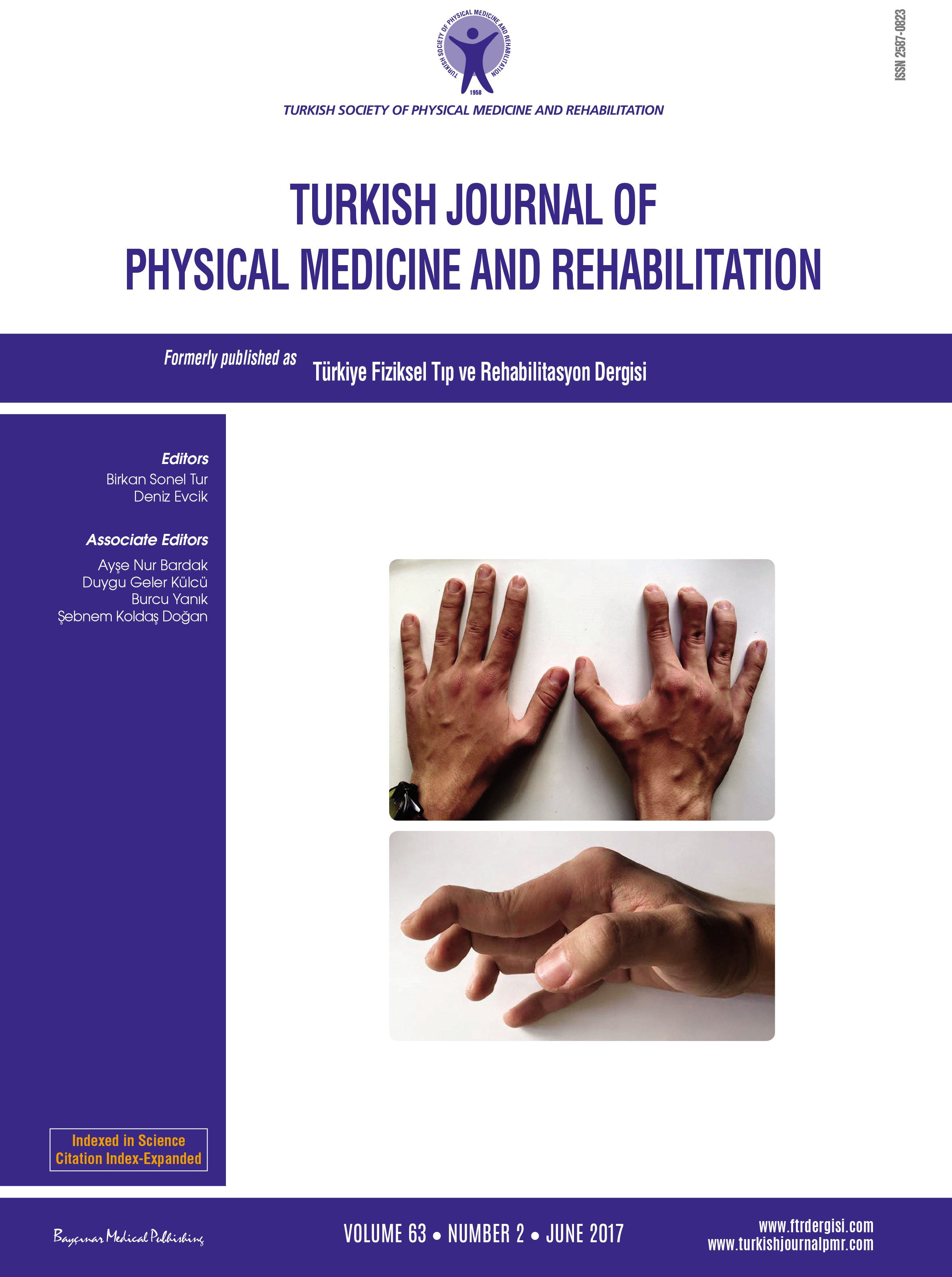The efficacy of vestibular electrical stimulation on patients with unilateral vestibular pathologies
2 Department of Physiotherapy and Rehabilitation, Bahçeşehir University, Faculty of Health Sciences, İstanbul, Turkey
3 Department of Physical Medicine and Rehabilitation, Medical Faculty of Medipol University, İstanbul, Turkey
4 Department of Otolaryngology, İstanbul University, İstanbul Faculty of Medicine, İstanbul, Turkey DOI : 10.5606/tftrd.2016.267 Objectives: This study aims to investigate the efficacy of vestibular electrical stimulation (VES) in unilateral vestibular lesions including benign paroxysmal positional vertigo (BPPV).
Patients and methods: Between June 2007 and August 2007, a total of 19 patients diagnosed with BPPV were included in this study and they were randomized into two groups using the 1:1 method. Ten patients were administered medical treatment plus VES (treatment group; 1 male, 9 females; mean age 55.8 years; range 27 to 74 years), whereas nine patients were only administered medicine (control group; 2 males, 6 females; mean age 54.9 years; range 34 to 73 years). Both groups received the same medical treatment throughout the study. Vestibular electrical stimulation was performed for 30 min long twice a day, three times a week; 12 sessions in total with 80 Hz high-frequency Transcutaneous Electrical Nerve Stimulation (TENS). Before and after the treatment, patients’ severity of dizziness was assessed with Visual Analog Scale (VAS) and daily life activities with Dizziness Handicap Inventory (DHI), and their duration (sec) of single leg stance with eyes open and closed was recorded.
Results: Compared to prior to the treatment, VAS-dizziness and DHI scores, and the duration of single leg stance on one foot with eyes open and closed at the end of the treatment showed statistically significant improvement in both groups; however, although VES provided a positive contribution, we did not find a statistically significant difference between the two groups. Conclusion: It can be concluded that VES has positive contribution to medical treatment of patients with dizziness due to unilateral vestibular lesions; however the results of this study should be further investigated with larger groups of patients.
Keywords : Unilateral vestibular pathology; vestibular electrical stimulation; vestibular rehabilitation

















